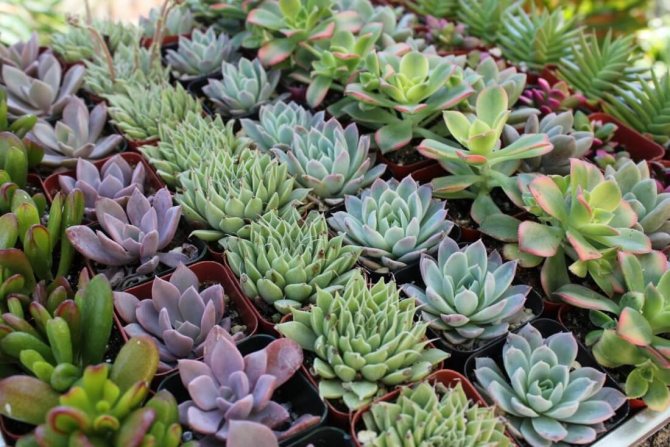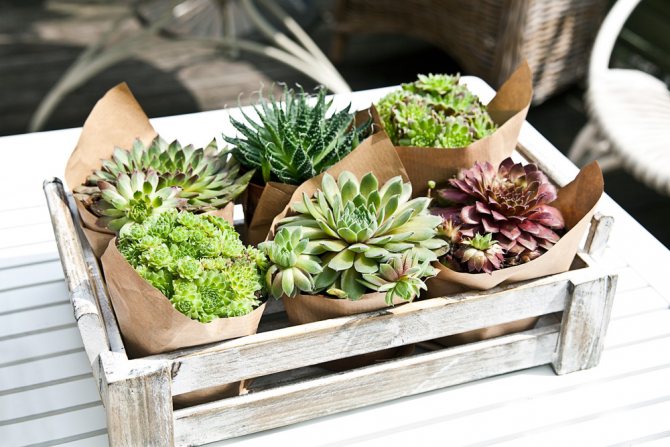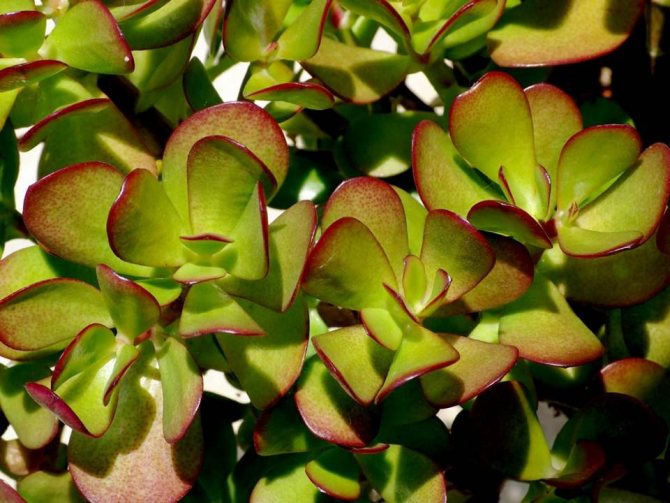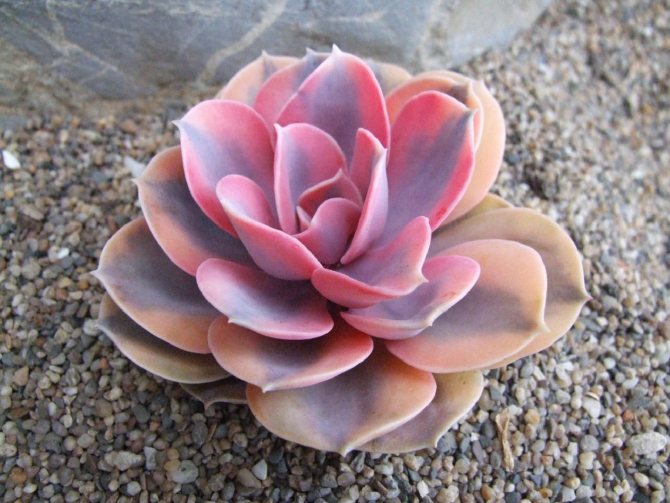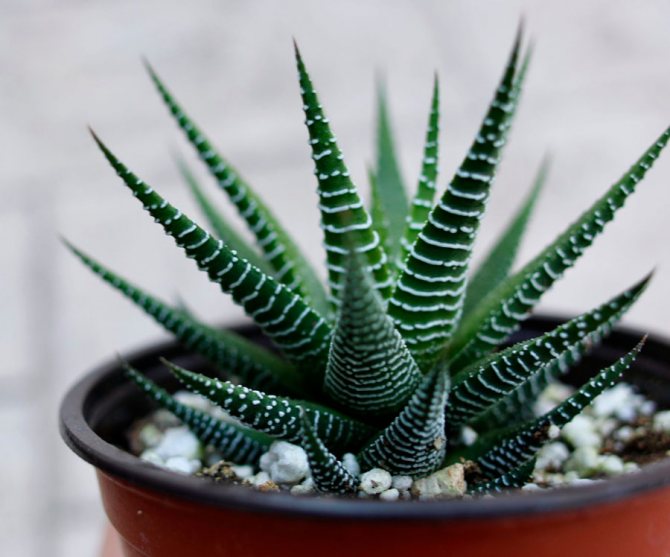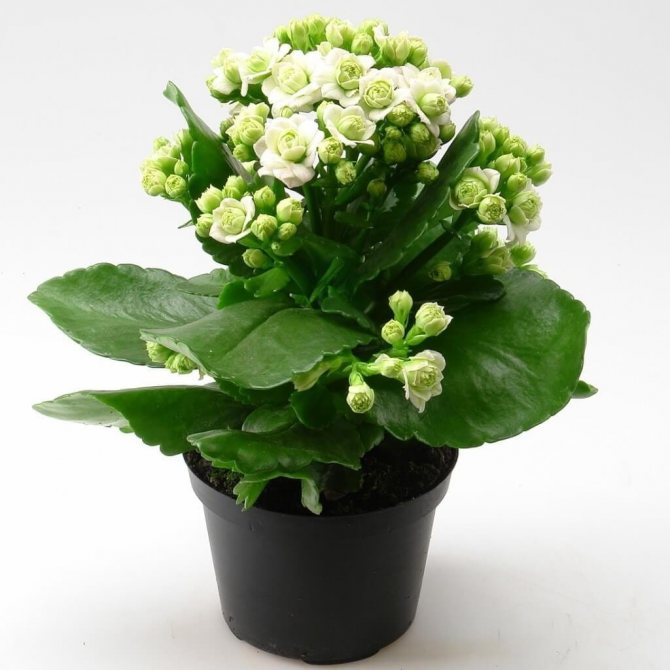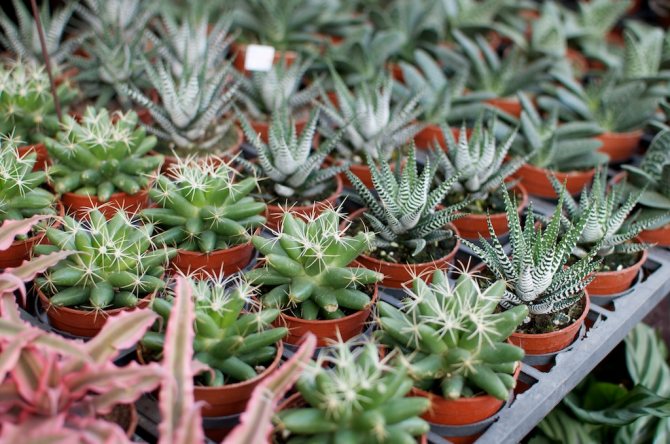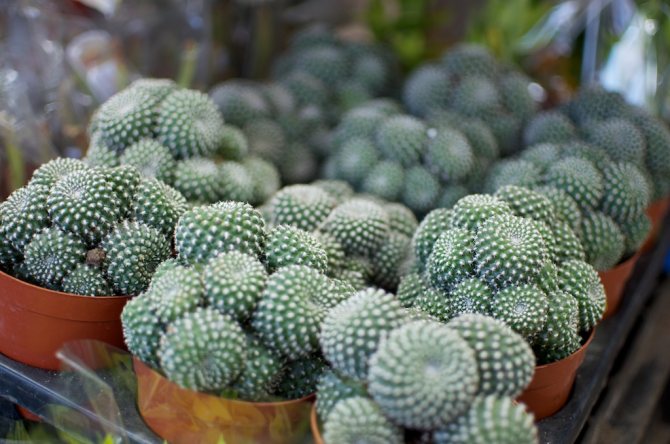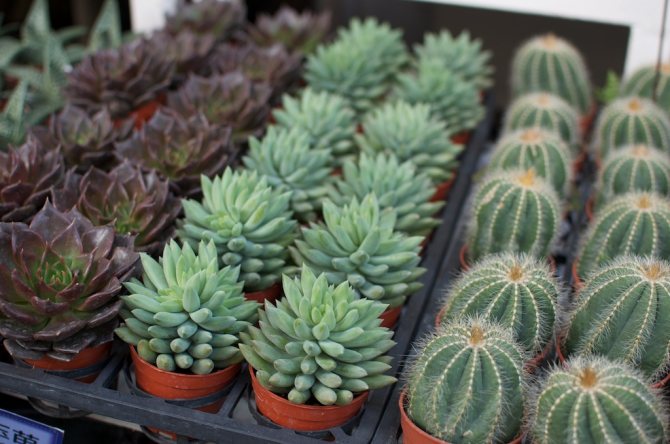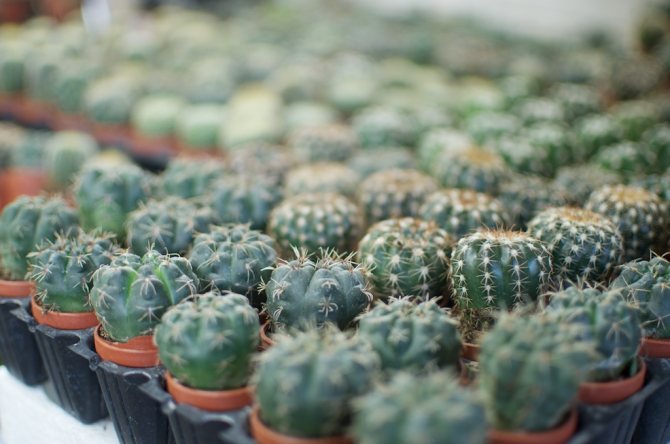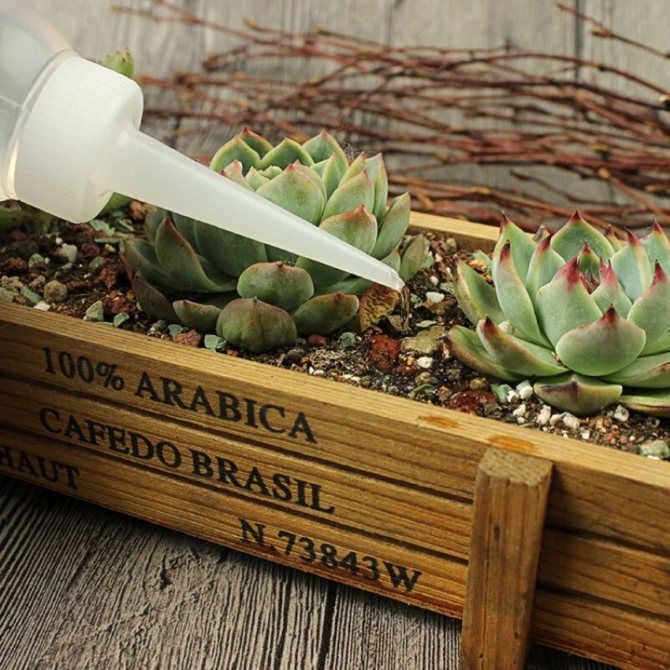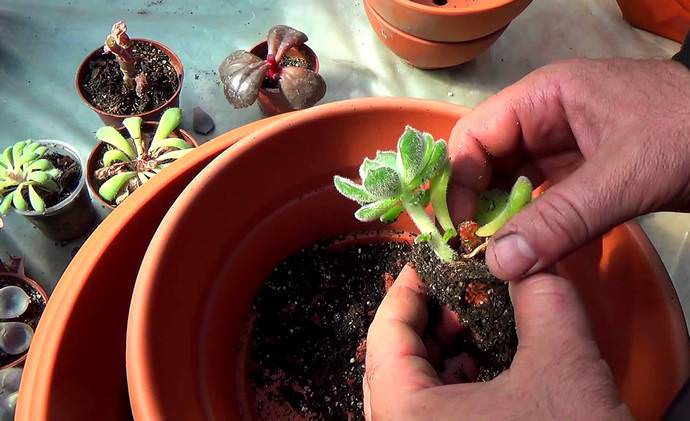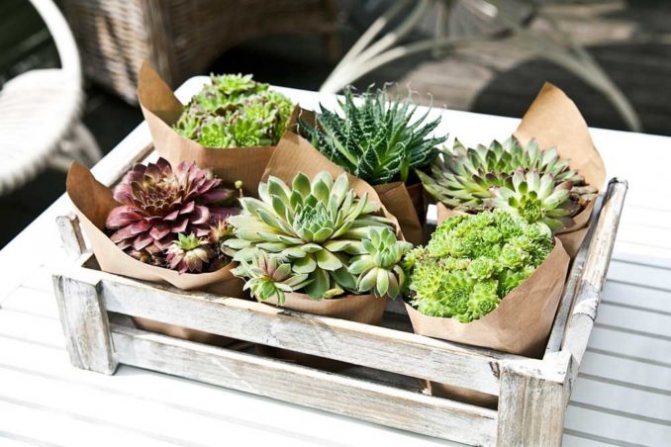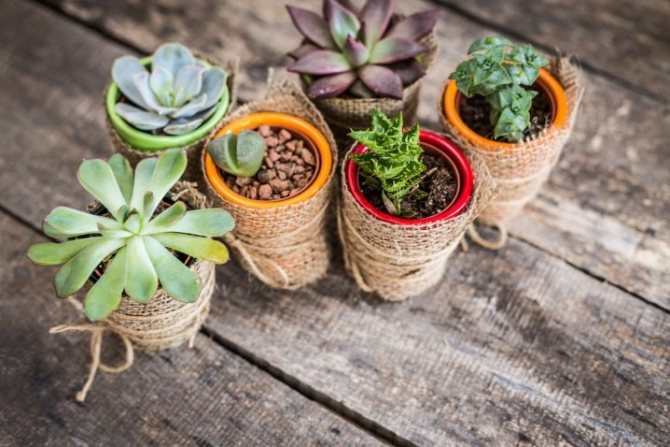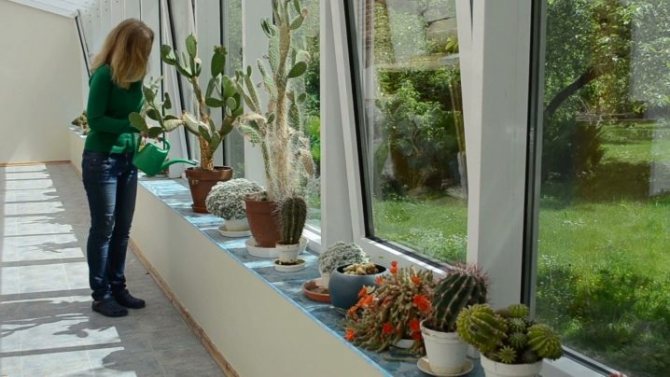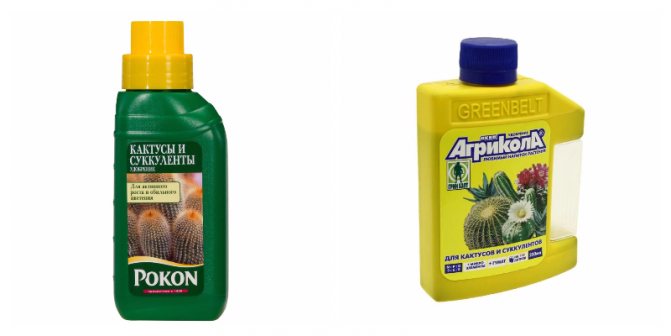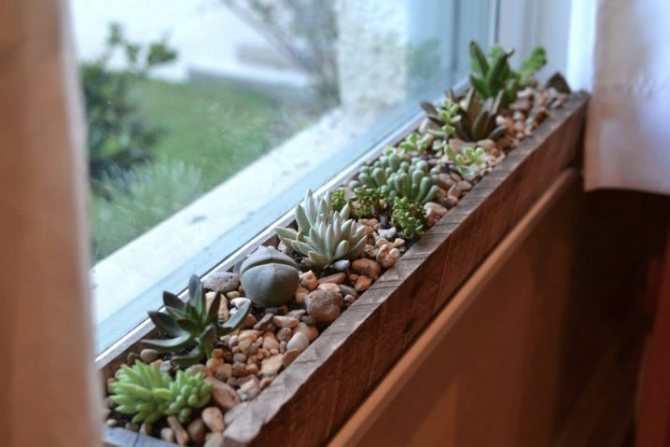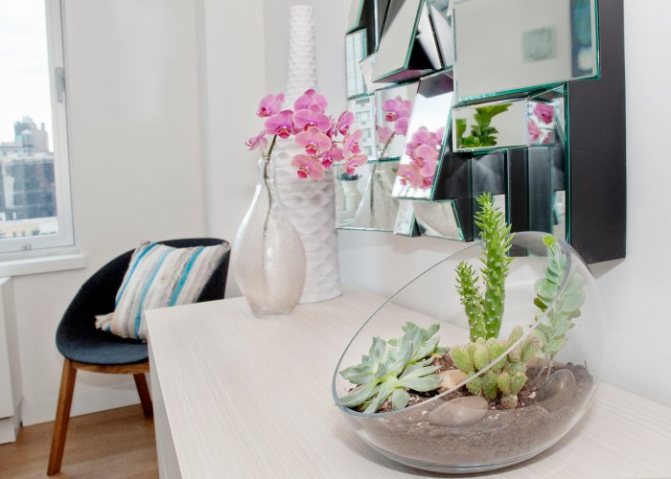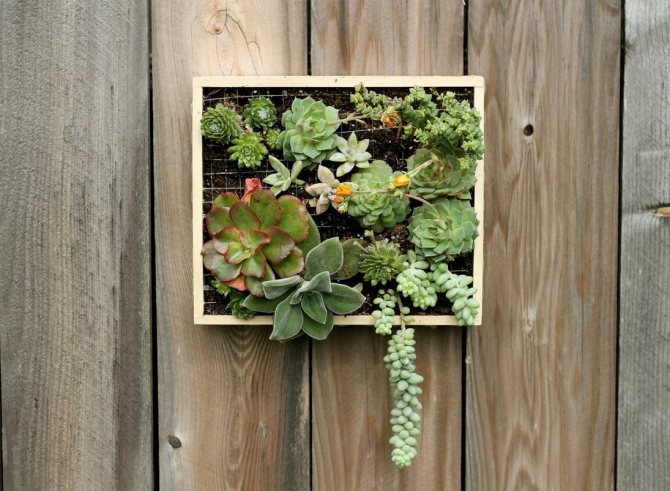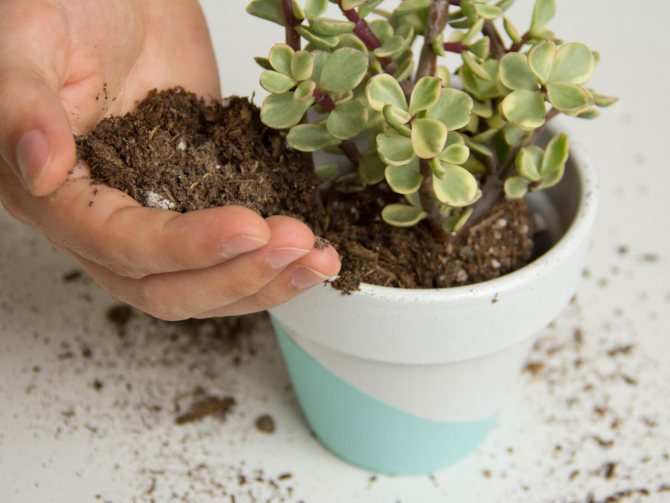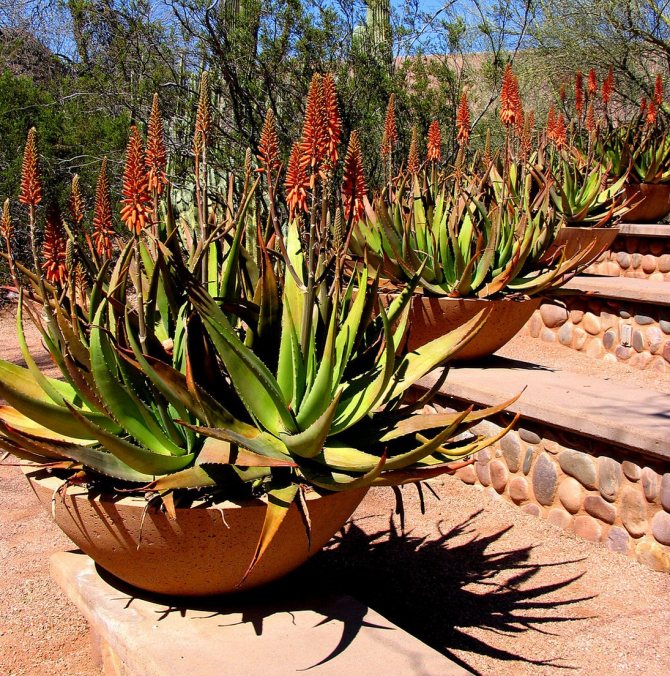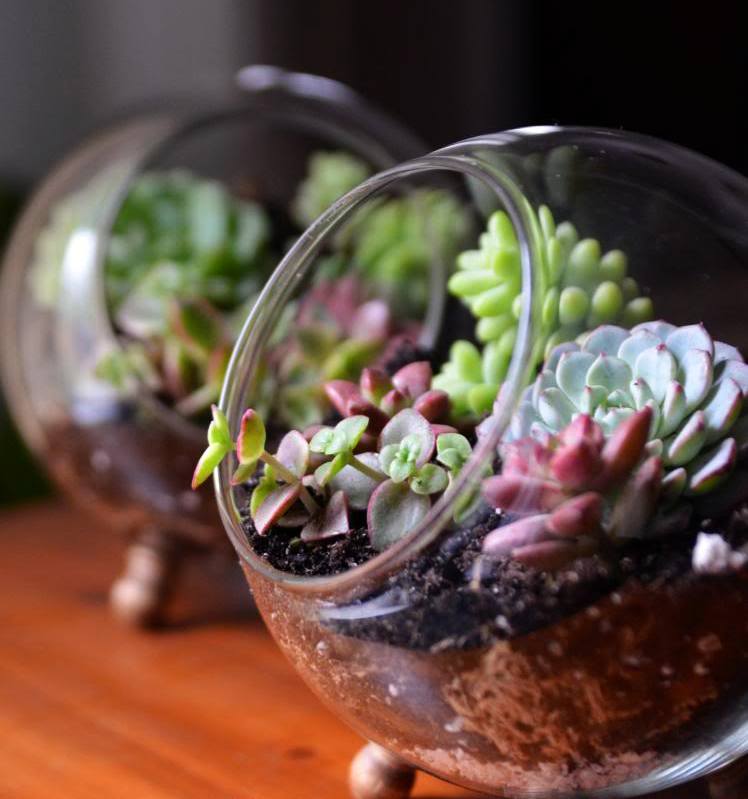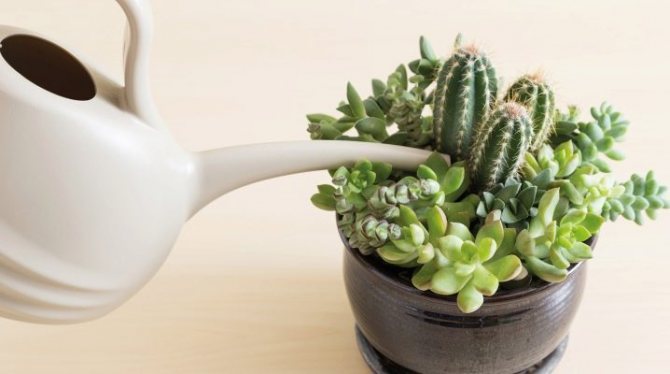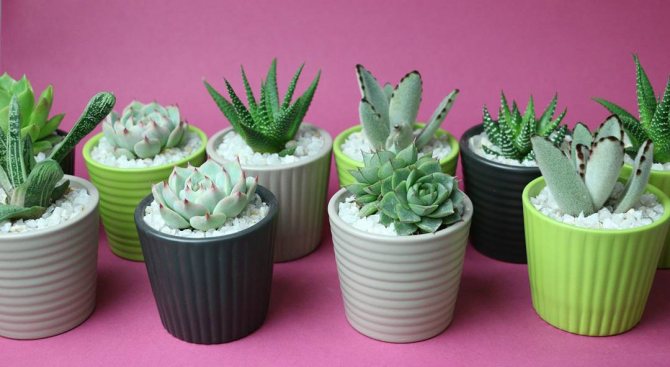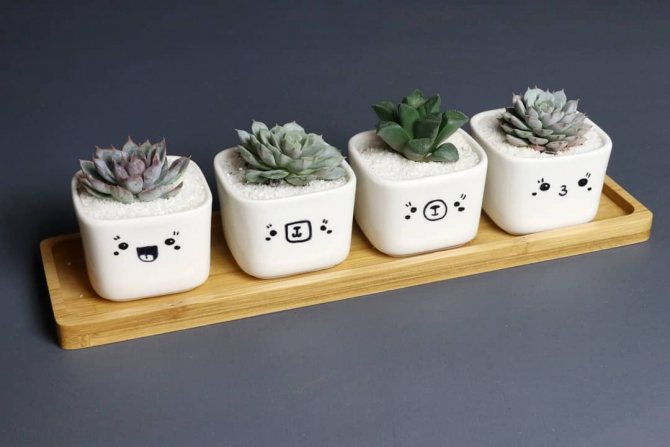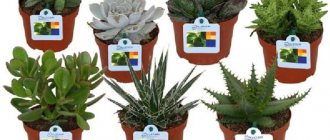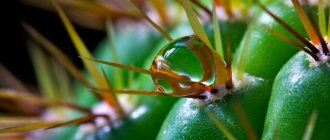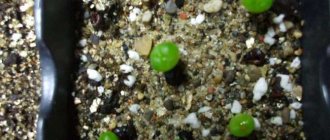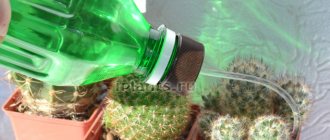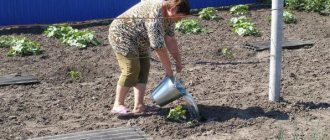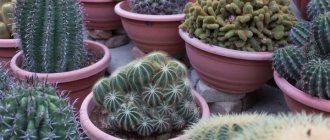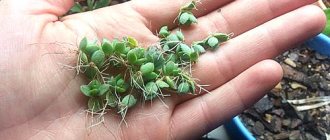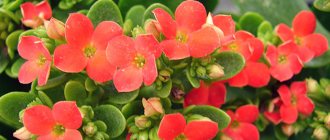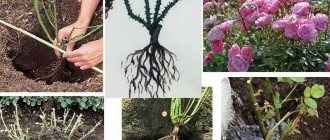Succulents (succulentus) are represented by plants that have special tissues that store water. Most often, in natural conditions, such plants grow in arid areas. However, the cultivation and reproduction of these crops by flower growers is successfully carried out at home.
The following types are classified as the most popular succulents in indoor floriculture:
- echeveria or "stone flower";
- crassula or "fat woman";
- sedum or sedum;
- Kalanchoe;
- scarlet or "agave";
- epiphyllum or "cactus".
It is best for beginner growers to give preference to growing such unpretentious succulents as Opuntia, Cereus, Echinopsis, Rebutia, Schlumbergera.
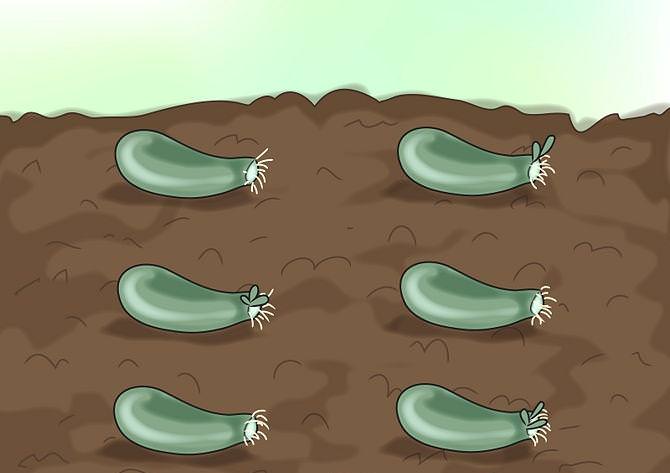
Description of succulents
At home, plants are grown with fleshy leaves. With the help of them, they accumulate water. Such a need arose among cultures due to the specific conditions of stay, since they originally inhabited the deserts. The most popular are grown on the territory of Russia types, which include:
- Agave. It is available in several varieties. All of them are unpretentious and look like a miniature Christmas tree in appearance. Their leaves are pointed, curl upward. They have a light green hue and are collected in a kind of rosette.
- Aloe. This plant, which is popular in Russia, is also a succulent. It has a central stem, from which long processes extend. They are arranged in a circle. There are different varieties of aloe, but they all have a green tint, sometimes with spotty blotches.
- Argyroderma. Its rosette is formed by several fleshy and thick leaves. Usually there are 2 of them. Between the main leaves is a beautiful flower that occupies the diameter of the whole plant. Its petals are pink or white.
What are succulents
Almost all representatives of this group are endowed with juicy, literally liquid-filled stems and leaves. Such reserves are conceived by nature for the purpose of survival, since the living conditions for plants are not at all easy. Almost all of them grow in desert areas, where it is very difficult to get water.
To adapt to the conditions of lack of water, succulents are endowed with the following qualities aimed at reducing the evaporation of liquid and its reservation:
- The stem and leaves are covered with a waxy coating or densely pubescent.
- The leaves are replaced by thorns, through which evaporation does not occur.
- Many succulents have a ribbed stem that expands when water enters it, thus increasing the volume of the stock.
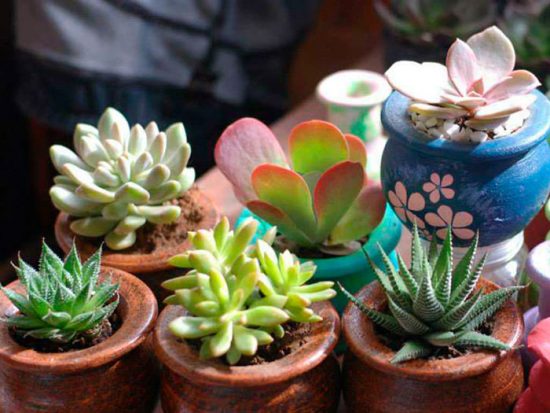

- The leaves are often rounded, which reduces the evaporation area.
- During the day, the plant “does not breathe”. Gas exchange occurs at night when the air temperature drops and the humidity rises.
- The leaves are shaped like a gutter, allowing moisture to sink to the roots.
- In order to protect from the burning sun, all parts of the crop are light in color and are capable of producing protective red and brown pigments.
- Most of the plant is hidden in the ground.
Succulents also have devices for protection from natural enemies: insects, birds and animals. For example, thorns, poisonous or just very bitter juice.Some of them “hide”, imitating the surrounding stones (lithops), while the leaves of others “frighten” with the likeness of an open mouth of an animal (fuacaria).
16 excellent varieties of plums for the Moscow region
According to the botanical classification, all succulents are divided into 2 subgroups:
- Stem - able to retain moisture in thick stems. These include cacti, milkweed.
- Leafy - retain water in fleshy leaves. Representatives of hot countries include aloe, lithops, echeveria, haworthia. In temperate climates, sedum and rejuvenation can be found in nature.
All of these succulents are perfectly adaptable to indoor conditions, so lovers are happy to grow them on their windowsills.
Landing features
This category of plants is unpretentious, but still requires compliance with some rules. If reproduction is carried out by leaves, parts of the stem and rosettes, you must first leave the cut area for 3 days in the room and let it dry.
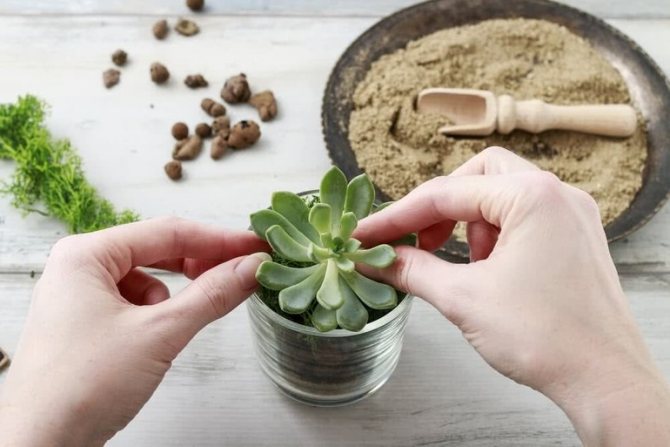

You can use a window sill for this. In the future, it is necessary to bury the shoot in a flower pot with soil so that it takes root.
It is necessary to plant the plant shallowly, so that 1/3 of it looks out from under the ground, otherwise it will not be possible to avoid rotting of the appendix. Do not ignore the specialized solutions sold in flower shops. They have a beneficial effect on the root system, strengthening it. T
They also contribute to the accelerated growth of culture and the prevention of diseases.
Examples of good formulations for promoting the health of succulents are:
- Gilea;
- Pokon;
- Bona Forte.
Growing from seeds
The depth of the container for planting plants should be at least 3 cm. Simple garden soil, mixed in equal amounts with coarse sand, is suitable as a soil for succulents. You can add a little charcoal to this mixture, which has absorbing properties. It absorbs all excess moisture, which protects the root system from decay.
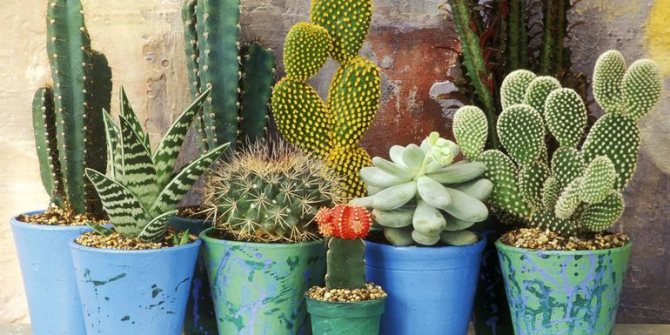

Aloe and a number of other plants can be sown on regular perlite without mixing anything else into it. The seeds do not even have to be sprinkled with soil. It is enough to put them on the surface of the substrate. At the same time, it is better to close the container itself with a piece of glass or film.
The optimal temperature range for growing crops is within + 20-25°. Do not overdry the substrate. Seedlings respond favorably to frequent watering. They also like good lighting. If you are going to plant a plant in winter or autumn, you need to provide it with increased daylight hours, using lamps for artificial lighting.
The first shoots can be seen after a few weeks. Individual plants germinate in a month. As soon as the plant grows to 1 cm, it must be transferred to a separate container.
Seed reproduction
For seed propagation, fresh seeds are best suited, which must be pre-washed and sown with a peat-sand mixture. The planting substrate must be sterilized in the oven. The planting tank must necessarily have high-quality drainage holes and a drainage layer.
To saturate the soil substrate with moisture, it is necessary to install a container with crops in a pan with water... The temperature regime before emergence should be approximately 22-24 ° C. The average time required for seedling to emerge is two to three weeks, but may vary depending on the quality of the seed and the type of plant being propagated. It is possible to plant the seedlings that have appeared in about six months or a year.
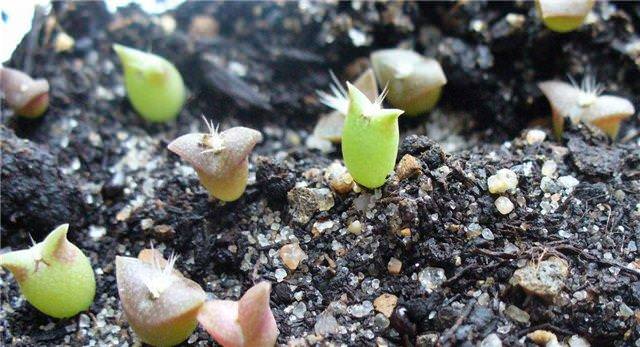

Using the pots
This capacity is selected on an individual basis. The gardener can make choices based on his preferences and tastes.Some people prefer clay materials, but we must not forget that such a material ensures rapid evaporation of moisture. This is due to its porous structure, which is unable to retain liquid. Of course, such a pots will not leak, but the soil with it will not remain wet for a long time.
Other materials for pots include:
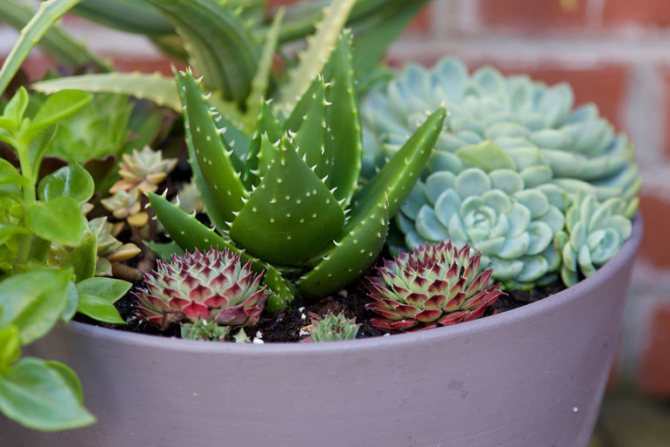

- a rock;
- plastic;
- vine.
The main task of the gardener is to quickly move the plant from a small pot to a larger one. Space and comfortable conditions for development are important.
Do not focus on the decorative characteristics, color design and shape of the pots.
Watering requirements
To determine which watering conditions are best for succulents, it is necessary to look at their natural habitat. Nature itself invented for them the most suitable climate, humidity regime. In desert regions, temperature drops are noted. Of course, in the conditions of Russia it is difficult to ensure such an effect. But you can do everything you can to get closer to those.
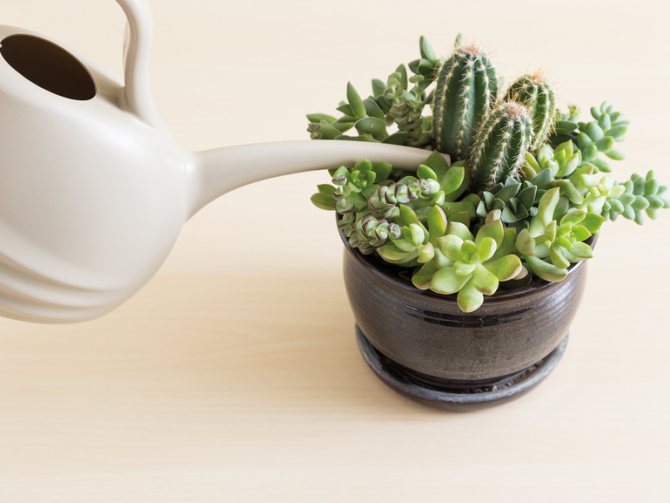

It is not hard to determine how often to water your succulents. It is necessary for this to touch the surface layer of the soil and determine if it is wet... If it is dry or even crusty, you can water it again. But if wet soil is hidden under such a crust, then watering will lead to the fact that the roots will begin to rot.
Succulents are able to exist for a long time without watering. It is enough to do this once every three days, or even better once a week. What the grower thinks is stress, the succulent tolerates perfectly. You should not, worrying about your favorite flower, water it too much.
In this case, it will only be possible to achieve the opposite effect, when the representative of the cactus begins to rot.
How to transplant a cactus into another pot. How to transplant a cactus at home
In order not to damage the cactus and transplant it correctly, certain rules must be followed. So, how to transplant a cactus:
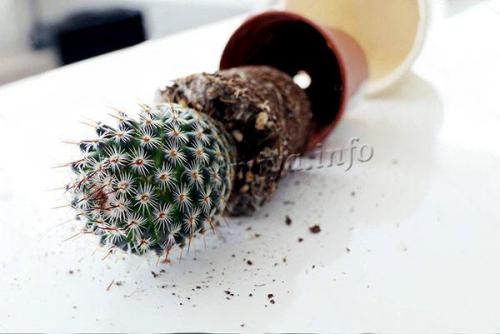

The first step is to get the cactus from the former container.
- The first step is to get the cactus from the former container. To do this quickly, you need to wrap its ground part with paper in several layers, and then, taking it by it, turn the pot over and get it out. Another option is to take a cactus in special rubber gloves or kitchen gloves, they are dense enough for the thorns to pierce them. If the cactus does not want to get out of the pot, you can pry the ground with a knife against the walls.
Additional nuances
Succulents should be sprayed every 3-4 days. Each type of plant may have its own requirements for this procedure. It is better to do this when the soil is completely dry. For watering, it is recommended to make a schedule and stick to it strictly. This is especially important when it comes to young plants.
Adult crops should be watered with a watering can. It is necessary to achieve complete saturation of the soil with water. Due to this technique, the root system will always remain healthy. Some growers recommend completely abandoning watering in winter, but much depends on the type of succulent. At the same time, all varieties require the most active flow of water in the summer.
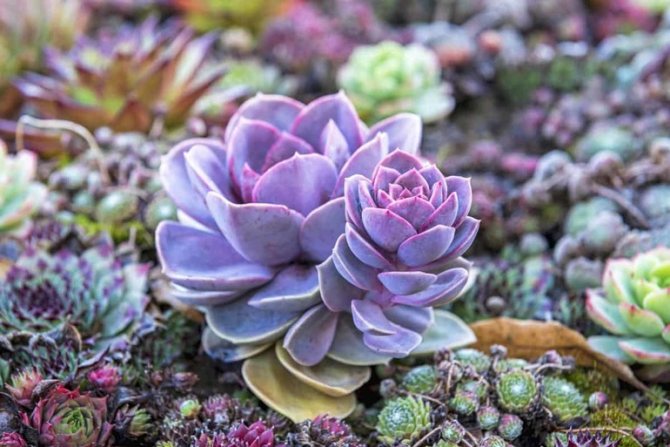

Florists sometimes experiment to determine how often succulents should be watered.
Sometimes it's even helpful to skip the extra couple of days.
From this, the roots only become stronger. There are certain signs that indicate lack of moisture:
- fragility and dryness of the upper foliage;
- shrinking of the entire plant;
- the appearance of folds at the ends of the shoots.
If you spray the succulents carefully and at regular intervals, they will quickly get used to the constant flow of water.At the same time, do not water them with a standard dose of water after they have experienced a drought. In such cases, the amount of moisture should be increased gradually. But even with this regime, succulents will be able to bounce back only after a week.
If there is high humidity in the room, they should be watered less frequently. When the weather is hot, the frequency of such manipulation should be increased.
Plants should be planted in a pot with drainage holes. Too wet soil is not suitable for them. In such an environment, mold develops rapidly. Pests also feel comfortable here. If in doubt about the amount of water used, it is better to underfill than overflow. To properly care for your succulent on a daily basis, you need a spray bottle and a small watering can.
When to transplant
Although many succulents and cacti grow tightly against the sides of the pot, it will be time for a transplant. Perhaps you just want to change the pot for a more attractive option, or there will be any problems with the flower. But how do you know about the need for a Succulent transplant? Here are some signs:
- if you see that the roots of the plant are too crowded, or they stick out of the drainage holes;
- if, during watering, water penetrates into the soil and is simply on the surface;
- if the plant looks too big for the pot;
- if the substrate has deteriorated, for example, it dries quickly or detached from the walls of the pot.
The general rule for succulents is: repot the plant every two years. This way, you can provide the flower with fresh and fertile soil to nourish it.
The best time for a transplant is beginning of the growing season... During this time, the succulent plant has the highest chances of survival and a successful transplant. In most species, the growing season begins in early spring, and this is the optimal transplanting time. It is worth noting that certain species start growing in the fall or winter, so be sure to determine the type of your plant.
Transplant recommendations
The main period for transplanting succulents is considered the first decade of March. This is the best time when sap flow has not yet begun, but new buds have appeared. The natural habitat of succulents presupposes special conditions for the development of culture, therefore, their roots germinate well into the ground, while the shoots extending on the sides are almost not formed.
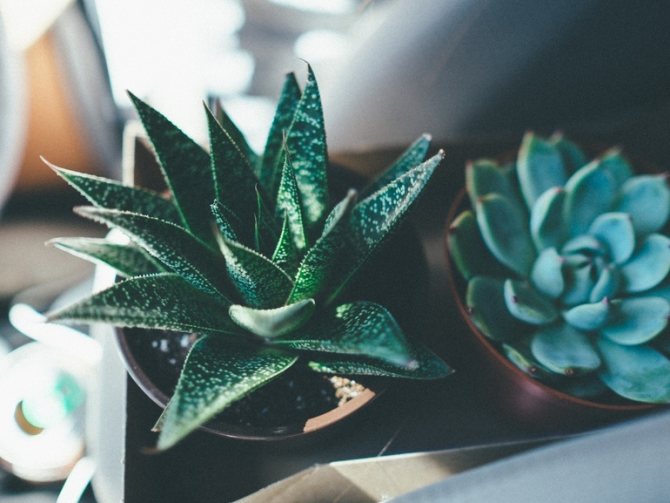

These developmental features allow the plant to receive more moisture and nutrient compounds, which rapidly evaporate from the soil surface.
Lateral roots are also superfluous because the hot sun in the desert quickly burns them out. Carefully dig up the flower during transplantation. In this case, the scapula must be positioned vertically, 5 cm from the trunk. This will avoid trauma to the roots. Having buried a garden tool in the ground, you need to remove all excess soil around it, without affecting the area that is close to the root.
After that, the succulent is transferred to a new place along with an earthen lump, where it is well sprinkled with a new portion of the substrate. Transplantation to young flowers is especially necessary. Such a procedure in relation to them should be carried out once a year. If the plant is older than 5 years, it is enough to do this once every 2 years.
Succulents require a special soil that is close to the composition of desert soil. You can buy it in a ready-made composition in flower shops. Do not ignore additional fertilizers that allow the purchased flower to take root better.
What are succulents
Succulents are a special type of plant that can accumulate and retain water in their fleshy leaves, so they do not need frequent and abundant watering. Translated from Latin, "sukus" means "juice", which explains such an unusual name for the house plant.
In this group of plants, you can see many different types of succulents, sometimes very different from each other. They are similar only in that they are in the same climatic conditions, dry air and rocky soil.
Succulents are divided into two types of plants. These types differ in the way they absorb water. Some accumulate it in the stems, while others - in the leaves.
Those that accumulate water in the leaves have bulky leaves characterized by fleshiness, for example, aloe, Kalanchoe or money tree.
Succulents of the stem type of water accumulation have a thick trunk, and the leaves, on the contrary, are small or they are absent a priori. Instead of leaves, such succulents have thorns or villi (lithops, carnegia), which are needed so that animals do not eat them.
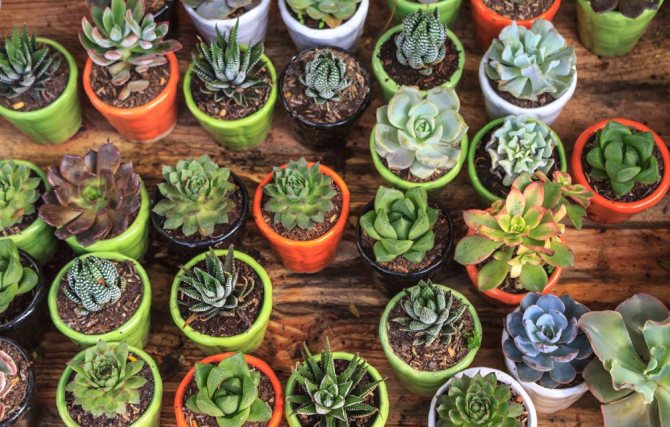

People are often mistaken in thinking that succulents are cacti. In fact this is not true. Rather, cacti are one of the types of succulents, so every cactus can be called a succulent, but not every succulent is a cactus.
These plants live mainly in hot countries with dry climates, therefore, with frequent and abundant watering, they suffer from diseases. For some, 2-3 moisture per year is enough and they will grow, develop and even bloom in such conditions.
On the leaves of some types of succulents, a protective layer of grayish tint seems to be applied. This plaque serves them as protection from the hot sun and armor from the rapid consumption of water. Those who do not have such a plaque are often covered with fine hair on the stem, which performs the same functions.
If moisture is not supplied for a long time, the succulent dies off, but only from above, keeping the roots alive. When rain or watering appears, they tend to revive from the root. Such protection is subtly provided by nature.
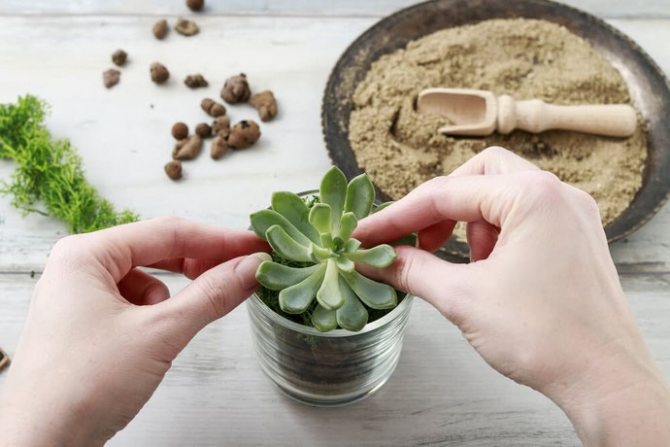

Probable problems and illnesses
Pests from the outside rarely attack succulents. Sometimes nematodes can be found in the root system. Thrips can also grow in the soil. This is possible only in cases where the soil and its filler were not purchased in the store, but dug out by the owner himself. In such a situation, one should resort to propagation by the top of the plant or make a transplant, having completely cleaned the roots of soil particles, and then treat the indicated areas with disinfectants.
Succulents get sick from inexperienced flower growers. They are faced with a situation where the plant rots. This is due to non-observance of the correct watering regime. If there are fears that it will not be possible to protect the culture from suppuration, it is necessary to put charcoal in the soil before planting. The following problems usually arise for beginners:
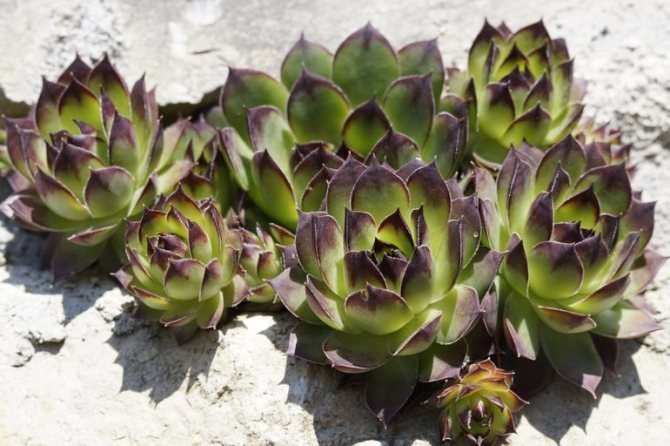

- Brown spots on the shoots and leaves. This is a sign of infestation by the botrytis fungus. It provokes decay of foliage. To cure the plant, you need to cut off the leaves with a defect, reduce watering, and even better - leave the soil dry for several days. After that, the fungicide solution should be added to the substrate. This could be the "Maxim" remedy.
- Brown spots with an unpleasant odor. The causative agent of another group is to blame here. This is the erwinia bacterium. To get rid of it, you should remove the damaged areas of the plant, reduce the frequency of watering and treat the flower with a solution of potassium permanganate. For prevention, a succulent must be periodically examined. It is especially important to look at the leaves, including their lower areas.
- Plaque of green or red. It can be penigillosis or aspergillosis. Both diseases are caused by a fungus. To combat it, the affected leaves are treated with an alkaline solution, for example, with the addition of soda, or potassium permanganate mixed with water.
- Foliage burns. They occur if the plant is left on the southern windowsill in direct sunlight. It is especially dangerous to do this during or immediately after hibernation.Also, an unfavorable period for sunbathing is the moment after the direct purchase in the store. The plant must gradually get used to new conditions, as well as to the bright rays of the sun.
Experienced growers say that it is better to immediately transplant the plant into another pot, disinfected in advance and filled with high-quality soil. You need to add charcoal to it.
They advise doing this procedure because sometimes the substrate is infected with nematoses. They are capable of causing a lot of harm to the plant, therefore, in order to prevent it, you should get rid of the soil of questionable quality. On the other hand, if there is no doubt about the qualifications of the flower shop employees and their conscientious attitude towards their work, you can do without such a procedure.


